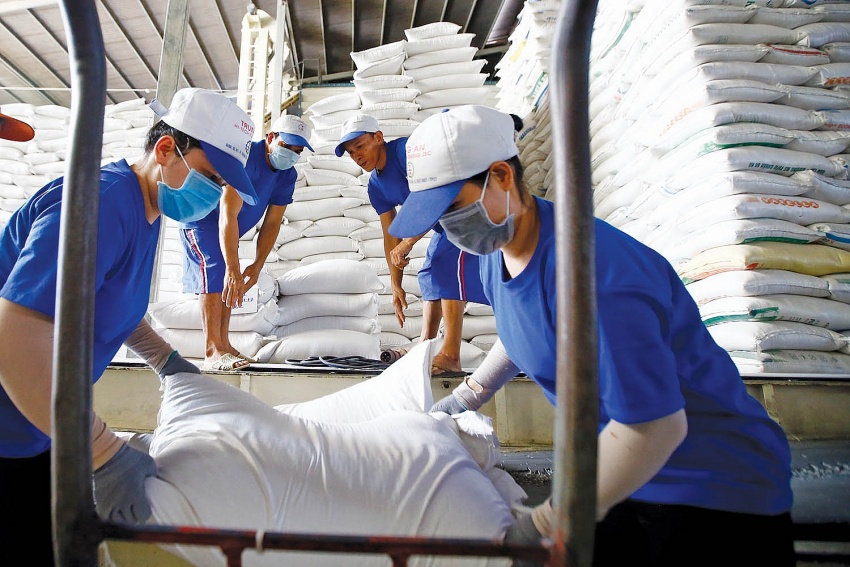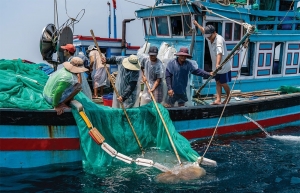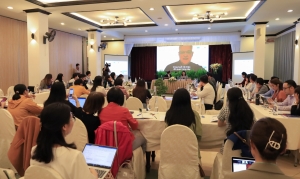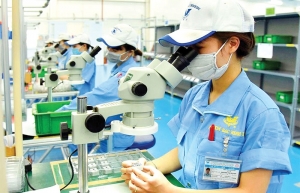Vietnamese EU exports benefit from trade deal
Amid a decline in global trade, high inflation in many major economies, and supply chain disruptions due to the impact of the pandemic and the Russia-Ukraine conflict, exporting Vietnamese goods to the EU in 2022 is expected to touch nearly $48 billion, $7 billion higher than in 2021.
 |
"This result is impressive, and it is impossible not to mention the driving force of effective EVFTA implementation by businesses and industry," said deputy minister of Industry and Trade Tran Quoc Khanh at a conference, looking back on the first two years of the EVFTA, held by the Ministry of Industry and Trade (MIT) on December 27.
The trade agreement officially took effect in August 2020. In the first year of implementation, bilateral trade between Vietnam and the EU reached $54.9 billion, up 12.1 per cent over the previous year. In which, Vietnam’s exports reached $34.5 billion, up 11.3 per cent.
In the second year, Vietnam-EU ’s turnover was $61.4 billion, up nearly 11.9 per cent on-year, of which Vietnam’s exports to the EU hit $45 billion, up 17 per cent.
In the first 11 months of 2022, turnover reached $57 billion, up 14 per cent year. In which, Vietnam's exports reached $43.5 billion USD, up 21 per cent on-year. The year's trade turnover is estimated to hit nearly $48 billion.
In recent years, many of Vietnam's key export products to the EU have recorded positive growth. In 2018, Loc Troi Group exported more than 2,000 tonnes of rice to the EU. However, in 2019 - 2021, it increased to over 10,000 tonnes per year. In 2022, it is expected to increase to 24,000. Nguyen Van Hieu, export director at Loc Troi Group, said the result in 2022 was impressive, thanks to the EVFTA.
Hieu added that since the EVFTA took effect, the group had paid more attention to products and goods to approach European customers.
The EVFTA promotes the growth of export goods and creates an incentive for businesses and industries to meet the rules of origin to take advantage of tax incentives.
High production requirements
Exports to the EU have grown rapidly after the first two years of the EVFTA. However, many problems still exist that prevent enterprises and sectors from taking advantage.
Hieu said that the EU market had strict requirements on pesticide residues, so Vietnamese exporters needed to develop growing areas and value chains according to standards.
Enterprises will be severely inspected for subsequent export shipments if only one shipment is violated. It is not easy for Vietnam’s enterprises to expand rapidly their market share in the EU, which is the market with the highest standards in the world. The key factor to sustainable export growth starts from the production process and meeting the specific standards of each commodity industry, especially for agricultural and aquatic products.
Do Huu Hung, from the department of European and American Markets, said that the EU paid much attention to environmental issues in imported goods. They carefully consider whether the production process pollutes the environment, ensures sustainability, and so on. Domestic enterprises must pay attention to comply with these issues to export to the EU.
For example, in December, the EU announced it would implement the Carbon Border Adjustment Mechanism. In the same month, the EU also agreed to ban importing products, including coffee, cocoa, and soy, in cases deemed to contribute to deforestation.
 | EVFTA advantages threatened by tough competition Although Vietnam is hoping for stunning growth in seafood exports, particularly in the likes of basa fish and shrimp, the nation’s share in the EU market and utilisation of its trade deal with the bloc remain under some pressures. |
 | Vietnamese businesses trained in EVFTA’s Rules of Origin Vietnamese businesses had the opportunity to improve their knowledge on Rules of Origin (ROO) and receive useful information from experts to take full advantage of the recent European Union–Vietnam Free Trade Agreement (EVFTA) at a workshop organised by the ARISE+ Vietnam Project. |
 | EVFTA gains begin to blossom for Vietnam Vietnam and the EU, home to a market of nearly 450 million people, are witnessing a rise in their trade and investment cooperation fuelled by a bilateral free trade pact, which is offering a slew of benefits since it was established a couple of years ago. |
 | Taking advantage of EVFTA for imports Thanks to the EVFTA, Vietnamese enterprises have opportunities to increase exports to the EU market and promote imported goods and raw materials from the EU with lower prices. |
 | French businesses extend reach in green schemes in Vietnam There is tremendous potential for French companies to tap into the sustainable development field. Adam Koulaksezian, executive director of the French Chamber of Commerce and Industry in Vietnam, discussed with VIR’s Thanh Van about French companies’ initiatives to contribute to the sustainable development of Vietnam. |
What the stars mean:
★ Poor ★ ★ Promising ★★★ Good ★★★★ Very good ★★★★★ Exceptional
Related Contents
Latest News
More News
- Businesses ramp up production as year-end orders surge (December 30, 2025 | 10:05)
- Vietjet chairwoman awarded Labour Hero title (December 29, 2025 | 13:06)
- How to unlock ESG value through green innovation (December 29, 2025 | 10:03)
- AI reshapes media and advertising industry (December 29, 2025 | 08:33)
- FPT and GELEX sign deal to develop blockchain tech for global markets (December 29, 2025 | 08:29)
- Vietnam’s GDP forecast to grow by 9 per cent in 2026 (December 29, 2025 | 08:29)
- Women entrepreneurs are key to Vietnam’s economic growth (December 29, 2025 | 08:00)
- Vietnam's top 500 value-creating enterprises announced (December 27, 2025 | 08:00)
- The PAN Group shaping a better future with ESG strategy (December 26, 2025 | 09:00)
- Masan Consumer officially lists on HSX, marking the next phase of value creation (December 25, 2025 | 13:20)

 Tag:
Tag:





















 Mobile Version
Mobile Version